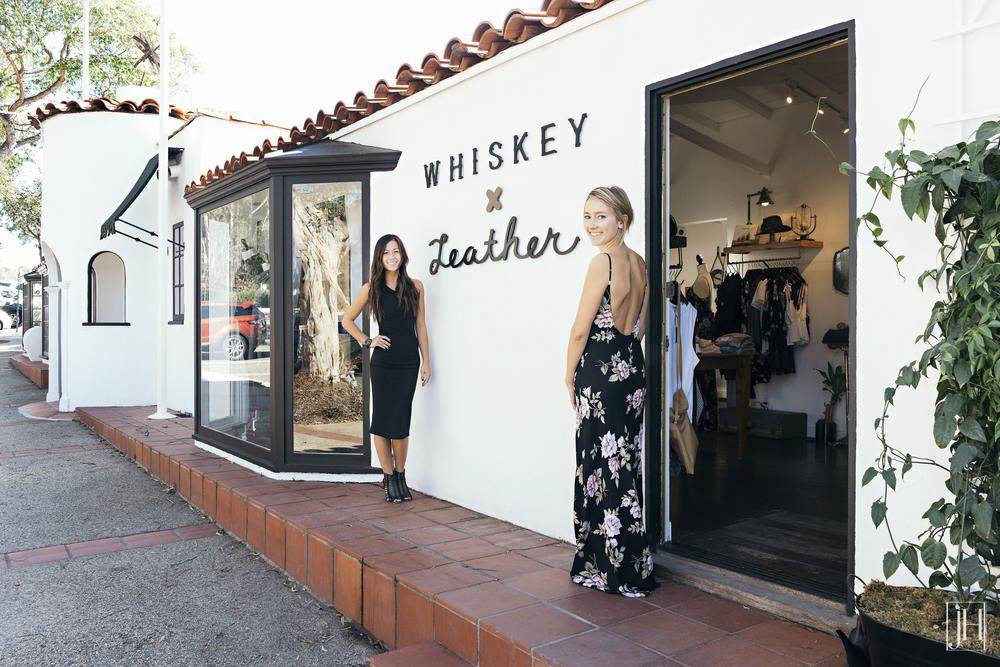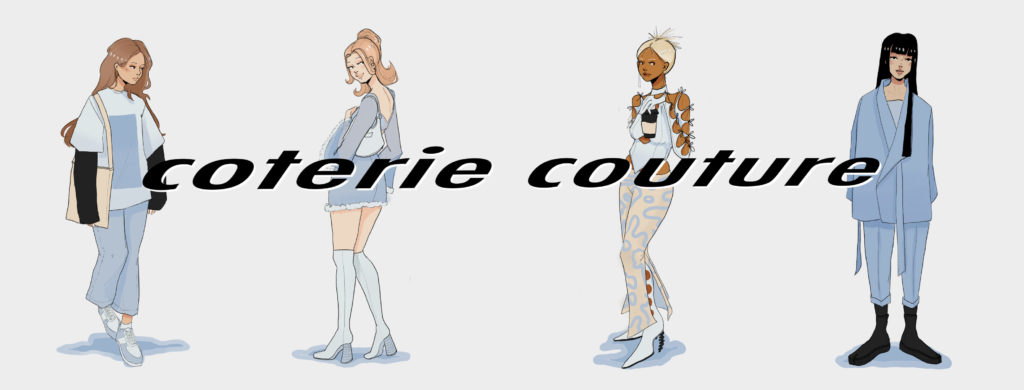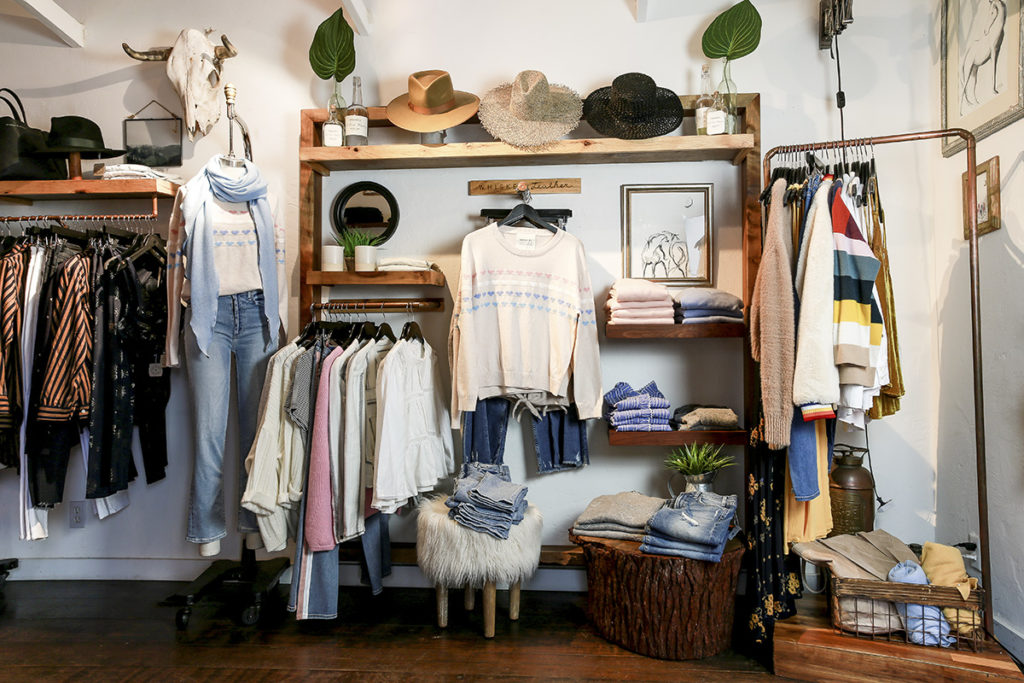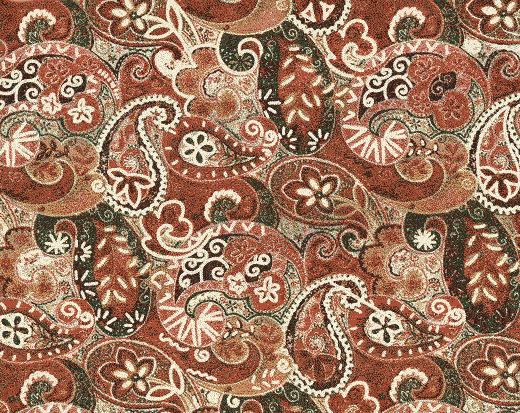Coterie Couture: Bohemianism fashion, art continues to counter the mainstream

With roots dating back to the classist tensions of 19th-century France, bohemian fashion embodies the unconventional and artistic. Now colloquially associated with festivals and the free spirited, the aesthetic is maintained by brands and boutiques such as Whiskey & Leather, owned by Zee Chew and Ariel Hujar. (Courtesy of Ariel Hujar)
By Natalie Brown
Oct. 11, 2021 2:28 p.m.
What someone wears speaks volumes about who they are as a person and the same can be said for the styles associated with various movements and cultures. As a cyclical art form, fashion – and its attached politics – almost always reemerges from the past. Follow columnist Natalie Brown in “Coterie Couture” as she chronologically explores the impact of different subcultures and their corresponding fashion each week.

Bohemianism’s free love was first formed through unrest.
From the 19th century to today, bohemianism and its corresponding fashion have captured the attention of niche subcultures and the mainstream alike. While bohemian ideologies are rooted in classist tensions, its self-expressive dreamlike aesthetic has carried it forward into modern day, becoming a solidified and respected style in the fashion world today, said anthropology professor Eric Gans.
“(Bohemianism) was based on the idea that you have a lot of young artists who instead of trying to produce works that would sell easily, were trying to develop their own personal style,” Gans said.
The bohemian lifestyle originated in Czechoslovakia and was associated with a population there akin to gypsies, who were considered to be societal outcasts. This original definition of the term, however, is obsolete today, Gans said. From a more modern, Western perspective, “bohemian” is a word prescribed to those who choose to live unconventional lifestyles, Gans said, and has been historically circulated among the likes of musicians, authors and artists starting as early on as the 1850s.

[Related: Coterie Couture: Cultural resurgence of psychedelia encourages optimism through fashion]
The idea of the bohemian in the creative sphere was the focus of several French artistic works, including Henri Murger’s 1845 short story collection “Scènes de la vie de bohème,” which glamorizes the vagrant bohemian lifestyle. Furthermore, Giacomo Puccini’s similar 1896 opera “La Bohème” centers on the life of a poor seamstress befriending a group of artists, Gans said.
Gustave Flaubert’s 1856 novel “Madame Bovary” discusses the idea of what it means to be a bourgeoise bohemian, or a “bobo,” a high society figure who is enamored with the fluid creativity of bohemianism but is still attached to the idea of capitalism and ambition. Evidently, the idea of “bohemianism” was a conversation point at all levels of the class system, and these creative works served to establish a set of deeply political bohemian cliches as being a poor artist-type, Gans said.
“It was France that had the first sentiment about a sense of the tension involved between the artist and the bourgeoise,” Gans said. “That’s why it was French literature that created these (bohemian) tropes for the future that were respected and imitated in England.”
Transcending the boundaries of country, the European imagination and general infatuation with this alternative lifestyle inspired the construction of the “bohemian” as someone who is anxious to define themselves, consistently going against the grain, Gans said. To be bohemian is to be eccentric and possess an exotic sense of style.
“The whole idea of the bohemian is that it has to be kind of excessive,” Gans said. “It has to be something that doesn’t fit in with every day.”
The same can be said of bohemian fashion. Popularized in 19th-century Europe, bohemian fashion aims to make a bold statement with its combination of busy patterns, vibrant colors and textures layered on top of each other, said fashion boutique owner Ariel Hujar. Connoting ideas of confidence and comfort, she said bohemian fashion is a distinctly experimental style popular among all demographics.
While bohemian fashion is closely intertwined with the ’60s and ’70s hippie movement, Hujar said music festivals such as Coachella have allowed these laid-back looks to take off in the mainstream today. Set in the desert of Indio, California, she said Coachella evokes retro ideas of free love and defining oneself as an outcasted member of society, making it only logical that its fashion follows suit.
“(Bohemian fashion’s popularity) is a mix of having festivals … and Australian brands being laid back, relaxed has helped the fashion stay in,” she said.

[Related: Alumnus reflects on journey from student-athlete to style influencer]
Today, it is brands such as SPELL as well as RAGA that are at the forefront of bohemian fashion, promoting this free-spirited, wanderer-type style with flowy tops and vintage-looking fabrics, Hujar said. In this particular moment of fashion where simple black and white basics seem to be the most popular mode of dress, Hujar said these whimsical, eye-catching pieces stand out from the rest.
The goal of bohemianism in both art and fashion has always been to go against the mainstream. Regardless of what is happening in the fashion world, die-hard supporters of the boho style will don its expressive looks, showing their support for the history of creativity and independence the style evokes, Hujar said. However, Gans said this meaning of bohemianism has greatly changed since its roots, asking an important cultural question today.
“The whole idea of the Bohemian people, who do things that aren’t permitted, is difficult to maintain in an era where almost everything is permitted,” he said. “How can you conceive of bohemianism in this context? What is daring?”

